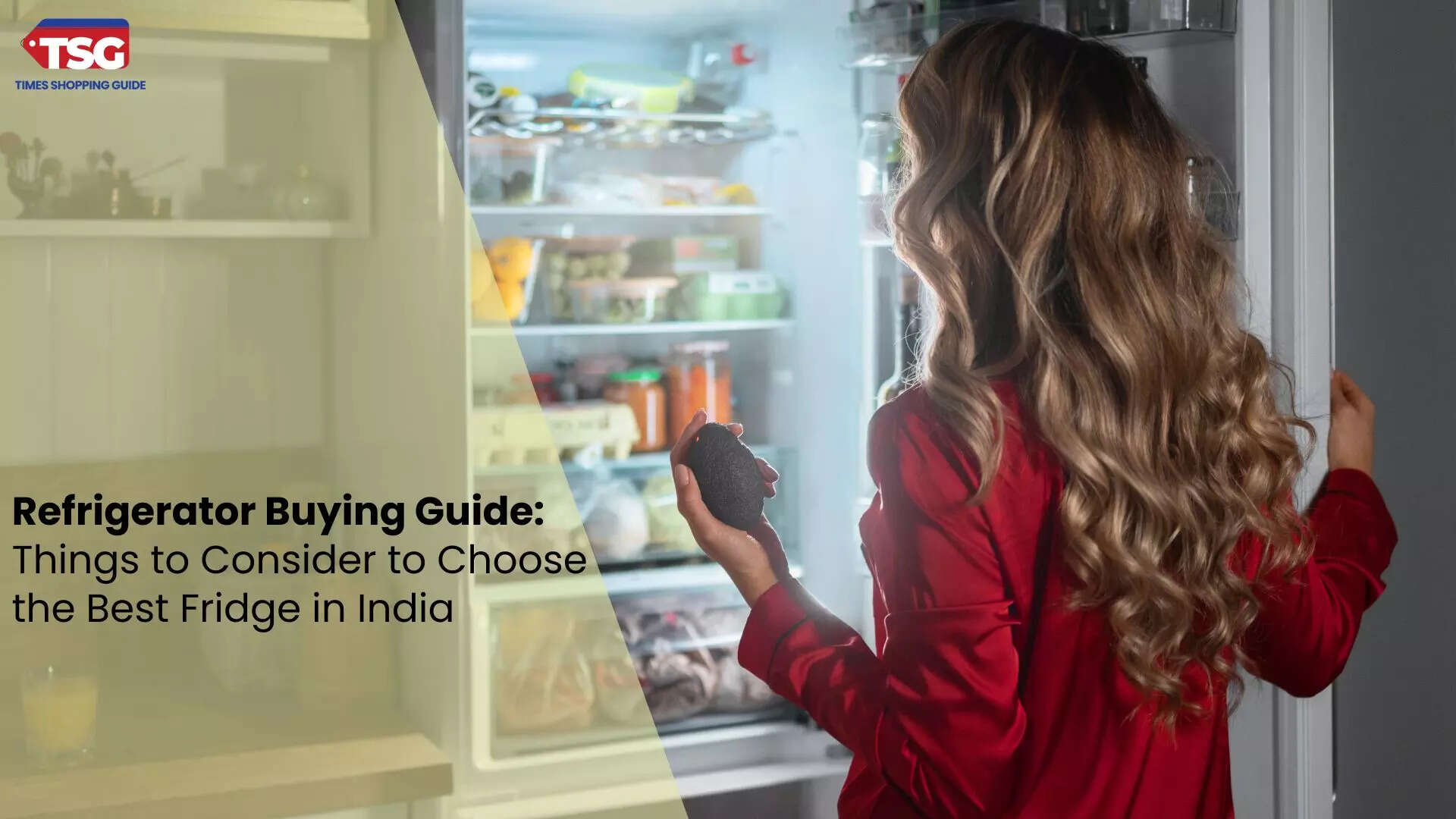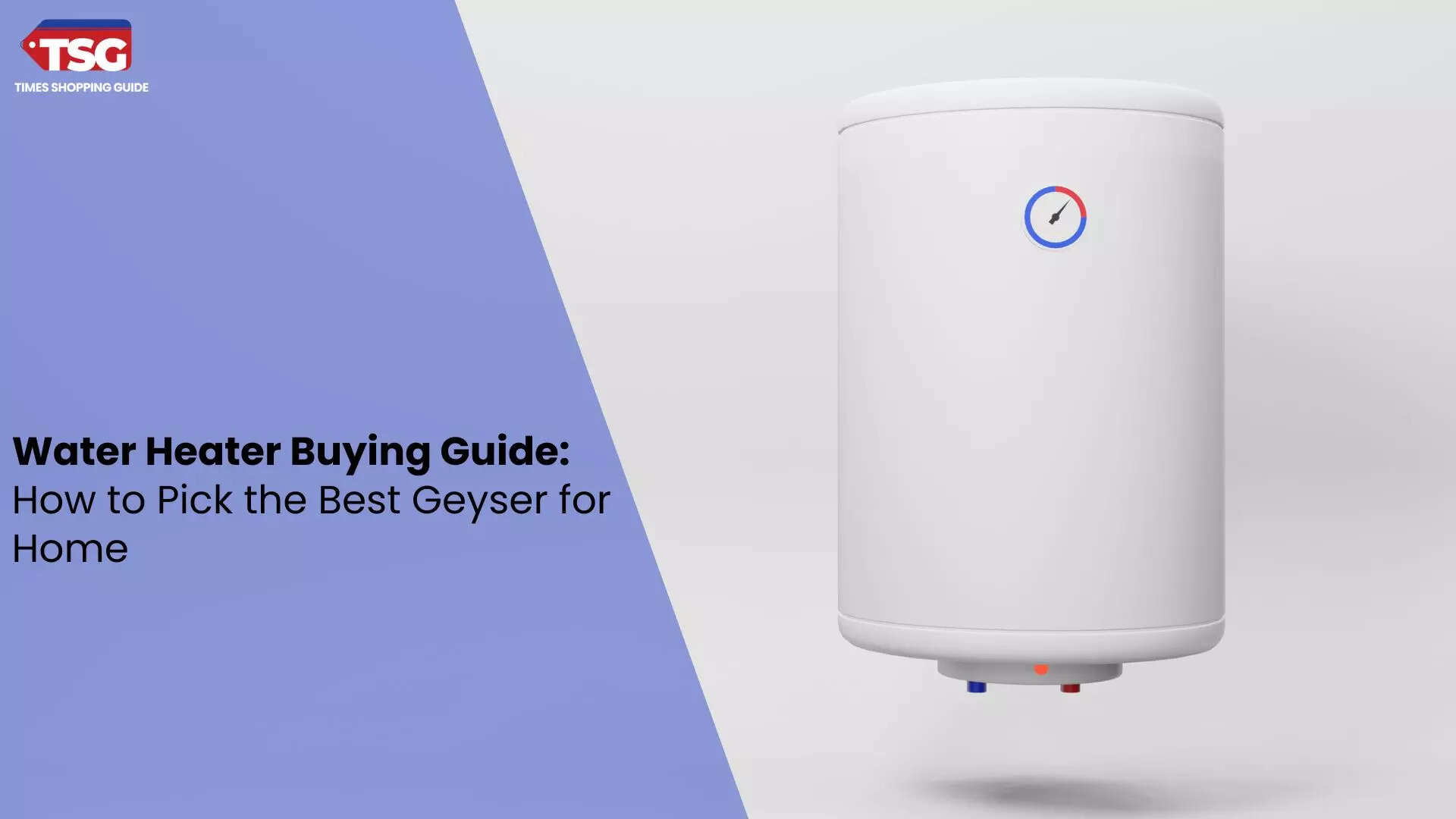- home
- appliances
- buying guide
- refrigerator buying guide things to consider to choose the best fridge in india
Refrigerator Buying Guide: Things to Consider to Choose the Best Fridge in India
Choosing the best refrigerator for your home is important, especially in a diverse market like India, where options abound. A fridge is not just an appliance; it’s a vital part of your daily life that helps preserve food, maintain hygiene, and enhance your kitchen’s aesthetics. This guide will help you navigate the complexities of selecting the best refrigerator based on various factors.

Refrigerator Buying Guide: Types of Refrigerators
a. Single Door
Single-door refrigerators are compact and budget-friendly, ideal for small families or individuals. They typically have a freezer compartment on top and are energy-efficient, making them a good choice for those who do not require extensive storage.
b. Double Door
Double-door models come with a separate freezer compartment. They offer more storage space and are ideal for medium—to large families. These fridges generally have better cooling technology, making them suitable for preserving perishables longer.
Also Read: Buying Guide for Double Door Refrigerators: Things That You Must Know
c. Side-by-Side
Side-by-side refrigerators have two vertical doors, one for the fridge and one for the freezer. They are spacious and convenient for quickly accessing items. These are ideal for larger families or those requiring much-frozen food storage.
d. French Door
These luxurious models combine the features of a double-door and a side-by-side. They have a spacious fridge on top and a freezer below, often with multiple compartments. They offer a premium aesthetic and are great for large kitchens.
e. Mini Fridge
Mini refrigerators are compact, portable units perfect for dorm rooms, offices, or as secondary fridges in homes. They are not suitable for families but are convenient for storing drinks and snacks.
Refrigerator Buying Guide: Size and Capacity
Choosing the best fridge in India is crucial. The capacity you need depends on your family's size and lifestyle.
- Small Families (1-3 members): 100-250 liters
- Medium Families (4-6 members): 250-400 liters
- Large Families (7+ members): Above 400 liters
Consider the available space in your kitchen and ensure enough room for ventilation. Measure the area where you plan to place the refrigerator to avoid any size-related issues after purchase.
Read More: Refrigerators Under 10000 for Small Spaces.
Refrigerator Buying Guide: Energy Efficiency
Energy efficiency should be a top consideration in a country with significant electricity costs. Look for refrigerators with high BEE (Bureau of Energy Efficiency) ratings.
- 1 Star Refrigerator: Basic efficiency
- 2 Star Refrigerator: Moderately efficient
- 3 Star Refrigerator: Good efficiency
- 4 Star Refrigerator: Excellent efficiency
- 5 Star Refrigerator: Best efficiency
Higher star ratings typically lead to lower electricity bills over time, making it a worthwhile investment.
Refrigerator Buying Guide: Cooling Technology
The cooling technology of a refrigerator affects its performance and efficiency.
a. Frost Free
These refrigerators use a fan to circulate air and maintain an even temperature, preventing frost buildup. They are easy to maintain and are ideal for busy households.
b. Direct Cool
These fridges rely on natural convection and require manual defrosting. They are generally more affordable but may not maintain a consistent temperature as effectively as frost-free models.
Also This: Best Refrigerator Stand for Your Home.
Refrigerator Buying Guide: Features to Consider
a. Adjustable Shelves
Look for the best refrigerator with adjustable shelves for flexibility in storing items of different heights.
b. Moisture Control
Some models have humidity controls in the crisper drawers to keep fruits and vegetables fresh longer.
c. Door Alarm
A door alarm alerts you if the fridge door is left open, preventing energy wastage and food spoilage.
d. Fast Freeze Function
This feature rapidly lowers the temperature to quickly freeze new items, which is useful for preserving freshness.
Want the Best Double Door Refrigerators to Elevate Your Kitchen? Check Here.
e. Water Dispenser/Ice Maker
Many modern refrigerators come with built-in water dispensers or ice makers, which can be a great convenience.
Refrigerator Buying Guide: Build Quality and Design
When choosing the best fridge in India, focus on build quality and design. Opt for sturdy materials like stainless steel or high-quality plastic that can withstand daily use. A well-constructed fridge ensures longevity and minimizes the risk of wear and tear. Additionally, consider the design and aesthetics; select a style that complements your kitchen decor. Features like finger-resistant finishes can enhance practicality.
Look for thoughtful design elements such as adjustable shelves and spacious compartments, which improve functionality. A combination of durability and appealing design will ensure you get the best refrigerator that meets practical and aesthetic needs.
Read This: Best Side-by-Side Refrigerators That Will Help You Maximize Your Kitchen Storage
Refrigerator Buying Guide: Brand Reputation and Warranty
When buying a refrigerator, consider established brands known for their quality and service. Brands like LG, Samsung, Whirlpool, and Godrej have strong reputations in India.
Check the warranty terms, as a longer warranty period indicates the manufacturer’s confidence in their product.
Refrigerator Buying Guide: Budget
Refrigerator prices in India vary widely based on features, size, and brand. Generally, you can expect to pay:
- Single Door: ₹10,000 - ₹25,000
- Double Door: ₹25,000 - ₹50,000
- Side-by-Side: ₹50,000 - ₹1,00,000
- Mini Fridge: ₹10,000 - ₹20,000
Set a budget before you start shopping to narrow down your options effectively.
Refrigerator Buying Guide: Noise Level
When selecting a refrigerator, consider its noise level, especially if you have a small living space. Most modern fridges operate quietly, but some models can be louder than others, which may be bothersome. Look for noise ratings measured in decibels (dB); ideally, choose models below 40 dB for a quieter operation. Read customer reviews to gauge real-world noise levels and performance. A quieter refrigerator enhances comfort and contributes to a more peaceful home environment, making it an important factor in your purchasing decision.
Refrigerator Buying Guide: After-Sales Service
After-sales service is crucial when purchasing a refrigerator. Opt for brands with a reputation for reliable customer support and extensive service networks. Check the warranty terms, as a longer warranty indicates confidence in product durability. Ensure that service centers are accessible for timely repairs and maintenance in your area. Look for customer reviews to gauge service quality.
A good after-sales service can significantly enhance your ownership experience, providing peace of mind in case of appliance issues. Prioritising after-sales support can save you time and frustration in the long run.
FAQs
1. What refrigerator brand is best?
Several brands consistently receive high marks for their reliability and performance. Brands such as LG, Samsung, Whirlpool, GE, Bosch, KitchenAid, Sub-Zero, and Monogram are frequently praised for their dependable appliances and excellent customer satisfaction ratings.
2. What is the trend in refrigerators in 2024?
Refrigerators with functional features that may keep food fresh for longer will likely continue to trend in 2024. Humidity-controlled drawers have adjustable airflow to expose food to different humidity levels for optimal fresh storage.
3. How do I decide which refrigerator to buy?
You need to select a refrigerator with the right capacity based on your family's requirements. A larger refrigerator will not only cost you more money but will also take up more space in your kitchen. Manufacturers also mention the capacity of the freezer compartment.
Disclaimer: Times Shopping Guide is committed to bringing you the latest products from the best brands. Our selection is based on market research and positive consumer feedback. Times Shopping Guide is also a part of an affiliate partnership. In line with this, we may receive a portion of the revenue from your purchases. Please note that the product prices are subject to change based on the retailer's deals.










